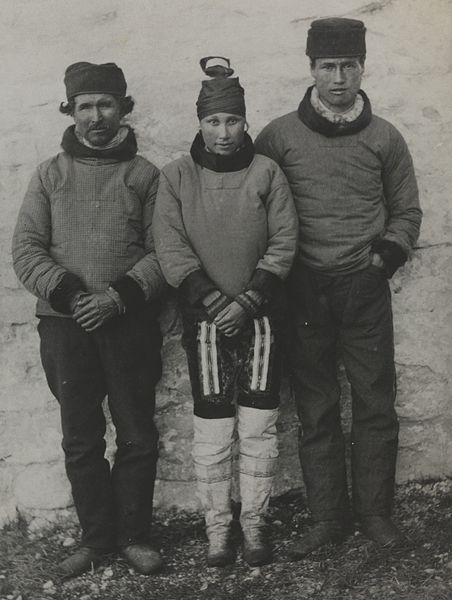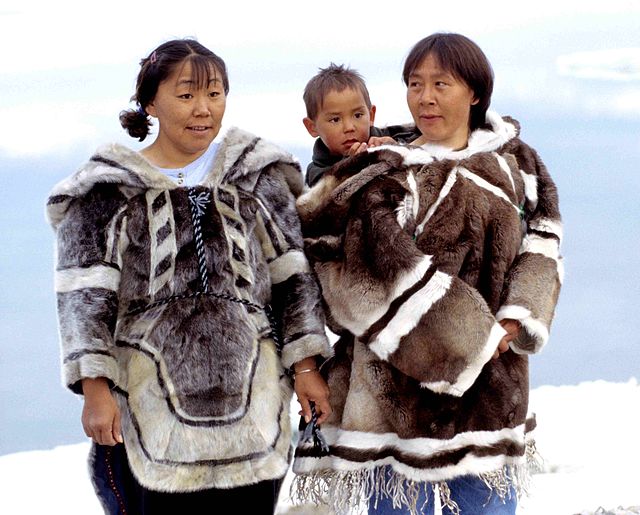History of Inuit clothing
Archaeological evidence indicates that the use of Inuit clothing extends far back into prehistory, with significant evidence to indicate that its basic structure has changed little since. The clothing systems of all Arctic peoples are similar, and evidence in the form of tools and carved figurines indicates that these systems may have originated in Siberia as early as 22,000 BCE, and in northern Canada and Greenland as early as 2500 BCE. Pieces of garments found at archaeological sites, dated to approximately 1000 to 1600 CE, are very similar to garments from the 17th to mid-20th centuries, which confirms consistency in the construction of Inuit clothing over centuries.
Sealskin woman's parka discovered at Qilakitsoq in 1972, dated to c. 1475.
Watercolor painting of Inuk man known as Kalicho, by John White c. 1577
Group of Inuit in Greenland wearing cloth garments, c. 1888–1889.
Promotional photograph of polar explorer Robert Peary on the deck of steamship Roosevelt, 1909
Traditional Inuit clothing is a complex system of cold-weather garments historically made from animal hide and fur, worn by Inuit, a group of culturally related Indigenous peoples inhabiting the Arctic areas of Canada, Greenland, and the United States. The basic outfit consisted of a parka, pants, mittens, inner footwear, and outer boots. The most common sources of hide were caribou, seals, and seabirds, although other animals were used when available. The production of warm, durable clothing was an essential survival skill which was passed down from women to girls, and which could take years to master. Preparation of clothing was an intensive, weeks-long process that occurred on a yearly cycle following established hunting seasons. The creation and use of skin clothing was strongly intertwined with Inuit religious beliefs.

Women's traditional caribou skin outfit with amauti parka, trousers, mitts and long boots with side pouches. The back of the parka has an amaut or pouch for carrying a baby. From Baker Lake, Eskimo Point and Hikoligjuaq, west of Hudson Bay. Collected on 5th Thule Expedition, 1921–1924
Modern women's parka created by Inuk designer Victoria Kakuktinniq, 2021. The body of the parka is made from synthetic waterproof fabric, with silver fox fur trim on the hood and sealskin trim on the hem and cuffs. The curved hem is typical of the traditional amauti.
Man's parka and pants, southern Baffin Island Inuit, Hudson Bay (1910–1914), Royal Ontario Museum
Modern Inuit women in traditionally constructed amauti (woman's parka); left: seal, right: caribou (Igloolik, Nunavut, 1999)








